The Light Spectrum
The Light Spectrum Matchcard provides scientific information and hands-on demonstrations of the characteristics of white light. Younger students enjoy exploring the colors of the rainbow. Older students begin to grasp the scientific concepts of light waves and electromagnetic radiation.
Free Download Below
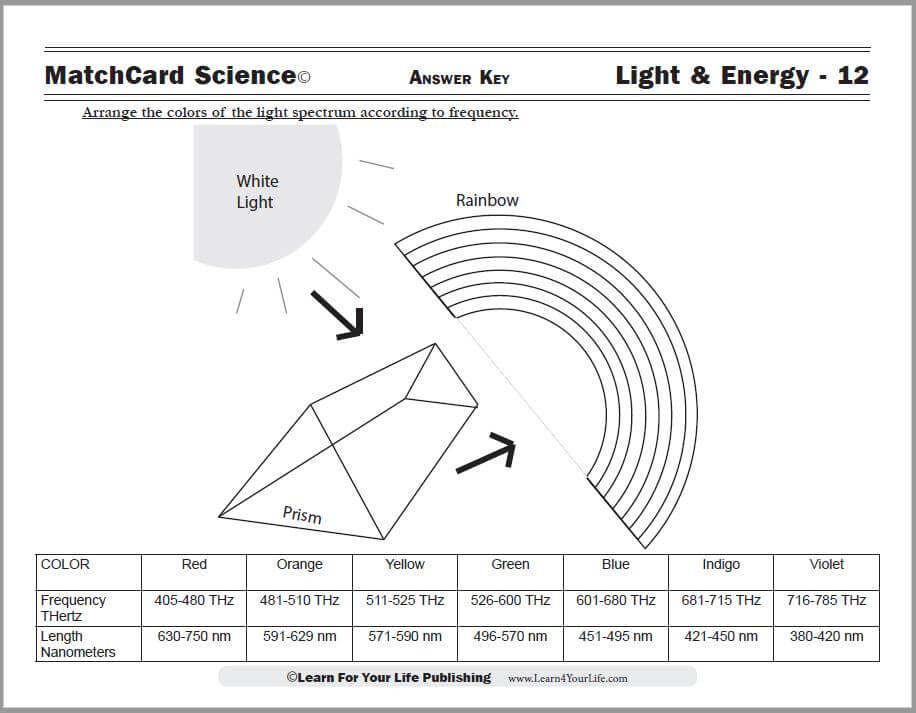
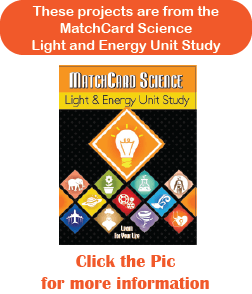
Colors of the Light Spectrum
Objective: Arrange the colors of the light spectrum according to frequency.Young children enjoy learning about rainbows. The first activities give them experience with rainbow colors. The more advanced activities below help older student grasp what causes the different colors and the characteristics of electromagnetic waves.
Download the Light Spectrum MatchCard
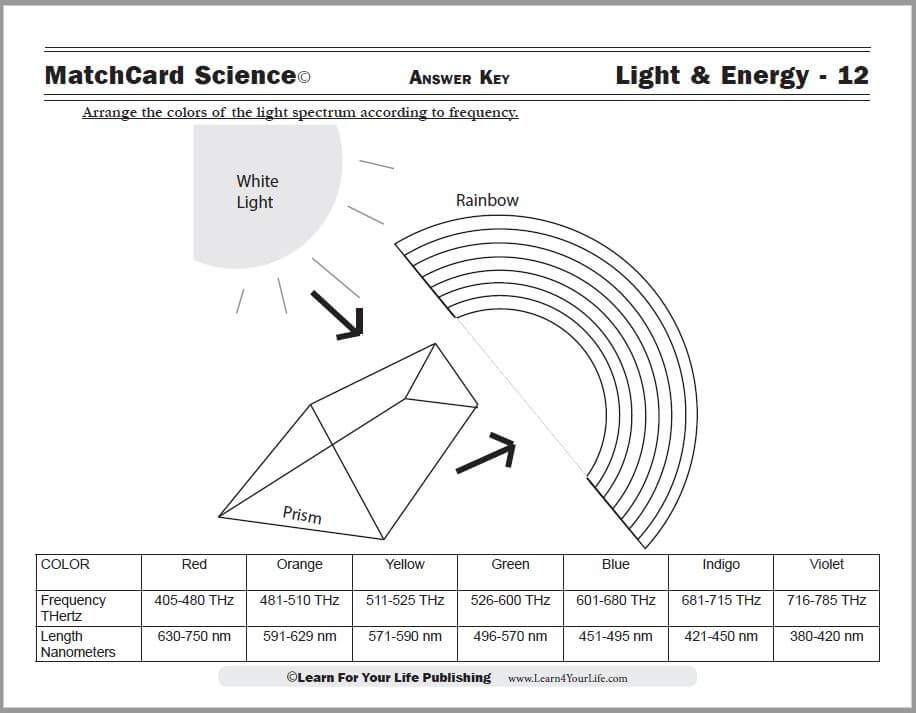

This is MatchCard #13 of the Energy Unit Study. Find more information on MatchCard Science below.
Learn About The Rainbow of Colors
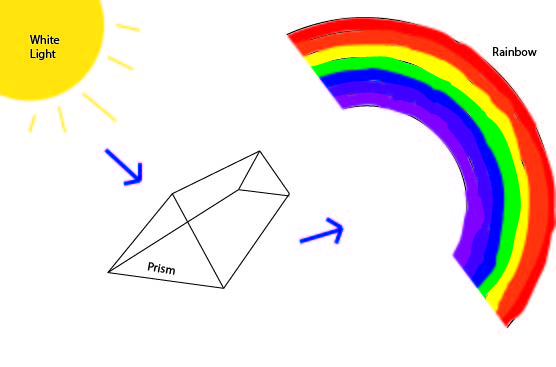
Color Wheel
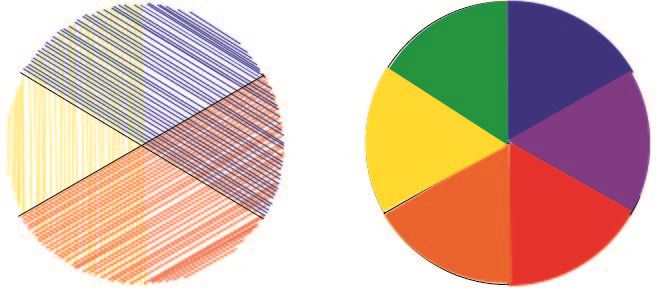
Now turn the circle so 3, 4, and 5 are straight up and down. Draw a series of red lines through this half circle. One of the sections will have red and blue lines going through it.
Finally turn the circle so sections 4, 5, and 6 are straight up and down. Draw yellow lines through these.
If the lines are close enough together, you should have a color wheel with orange, green, and purple between the primary colors. If the secondary colors don’t show up, you may need to lightly color between them with color pencils.
Rainbow Diagram
Draw and rainbow with seven arches, or use the rainbow that comes with the unit study. Number the different sections of the arches 1 through 7.Using colored pencils or crayons the student will color the spaces with the colors listed below
- Red - Number 1, 2, 6 and 7
- Yellow - Number 2, 3, and 4.
- Blue - Number 4, 5, 6, 7
- #6 Indigo - This can be considered "blue purple" (or some color definitions "blue-violet".) To make this color, add one more layer of blue on top of the previously colored shades of blue and red.
- #7 Violet - This can be considered "red purple" (or some color definitions "red-violet.") To make this color, add one more layer of red on top of the previously colored shades of blue and red.
- This mixing should produce the colors of the rainbow.
Create the light spectrum rainbow
Here is a simple experiment to produce the rainbow without the use of a prism.- First you need to cover the end of a flashlight with black construction paper.
- Start by tracing the end of the flashlight on black construction paper.
- Cut out the circle.
- Make a slit about 1/8 inch wide in the black circle. This will allow light to shine through the slit.
- Tape the circle on the front of the flashlight. Turn it on to make sure the light shines just through the slit.
- Next you will set up a clear plastic or glass container to act as your prism.
- You will need a square or rectangular clear dish or container. You will also need a small mirror.
- Fill the container at least half way with water.
- Place the mirror in the water at one end of the container. The mirror should be standing against the side of the container, at a slight angle.
- Create the rainbow.
- Place the flashlight on the outside of the plastic container, directed towards the mirror.
- Turn it on so the beam of light hits the mirror.
- Use a white card, or blank sheet of white paper folded in quarters to "catch" the rainbow.
- Notice the order of the rainbow colors is the same as Roy G. Biv
What happened?
Visible light is made up of all the colors in the light spectrum. The different colors are formed by electromagnetic waves. The difference in the waves of different colors is the length of the wave.When the electromagnetic waves from the flashlight traveled through the water, they were refracted (bent) at different angles according to the size of the waves.
This produced the rainbow of color.
Use A Prism
The use of a triangular prism provides more opportunities to explore the properties of visible light. However, the experiment above also assists the student to understand how the prism works.To use the prism, shine the flashlight through one side of the prism as shown in the MatchCard diagram above. Use a white card or white wall to visualize the rainbow as the light exits through the other side.
Length of Light Waves
Older students should take the concept of the lightwaves a little further and identify that the wave length is associated with the color.It is NOT necessary for the students to memorize the lengths of the wavelengths. However, they should be able to recognize that the shorter the wavelength, the closer it is to the bottom (red).
The wavelength of light is measured in nanometers, or one billionth of a meter. Look at a milimeter ruler. There are 1000 micrometers in a milimeter. Then there are 1000 nanometers in a micrometer.
For more information on wavelength, see the Sound Waves: Frequency and Amplitude MatchCard
Ultra-violet and Infra-red
Visible light consists of wavelengths between 380 - 750 nm. Electromagnetic waves longer and shorter than that do exist, but they are not visible to the human eye.Those waves a little shorter than red are infra-red.
Those a little longer than violet are ultra-violet.
Frequency of Lightwaves
Frequency refers to the number of cycles of electromagnetic radiation per second. The shorter the lightwave, the faster it's frequency.For older students who have grasped the concept of length of colors on the light spectrum, the concept of frequency of the colors can be explored.
There is no value in memorizing these numbers, but merely in identifying that the faster frequencies are associated with the shorter wavelengths (towards red) and longer wavelengths are associated with the slower frequencies (towards violet.)
For more information on frequencies of waves, see the Sound Waves: Frequency and Amplitude MatchCard
MatchCard Science
How To Use MatchCards

Download the FREE MatchCard Science Instructor's Guide and see how MatchCards can make building their science knowledge base fun.
Light and Energy Unit Study
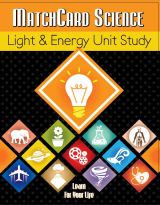
Download the entire Light and Energy unit study.
12 Science Unit Studies

Chemistry is only one of twelve complete unit studies for kids in 3rd to 8th grade.
Comprehensive objectives, hands-on projects, suggested science fair experiments, and the fun game-like MatchCards keep them interested in learning science. See all twelve MatchCard Science Unit Studies.
About Our Site
Hands-On Learning













